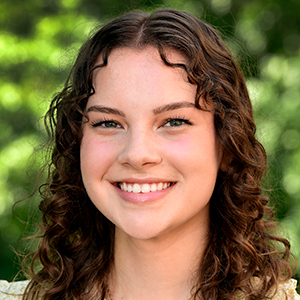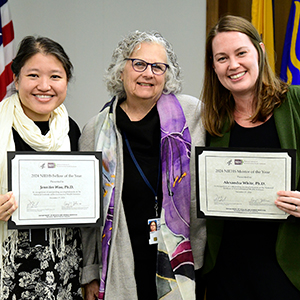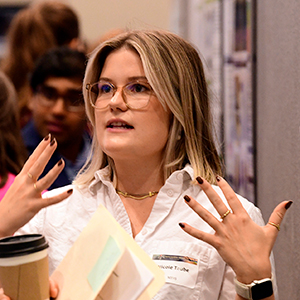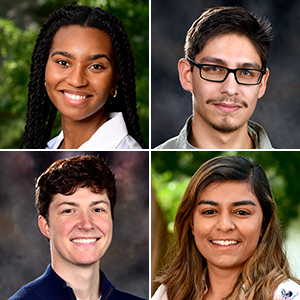For a time, Tori Placentra, who for the past three years was an NIEHS Intramural Research Award Training (IRTA) postbaccalaureate fellow, felt she had to choose between her passions — science and writing.
Her experience in the institute’s Mutagenesis and DNA Repair Regulation Group, led by Paul Doetsch, Ph.D., taught her she can have the best of both worlds. Embracing all facets of her personality and intellectual interests — the multitudes she contains, to echo the poet Walt Whitman — is a lesson Placentra has internalized.
She came to NIEHS from the University of North Carolina at Chapel Hill, where she double majored in chemistry and English.
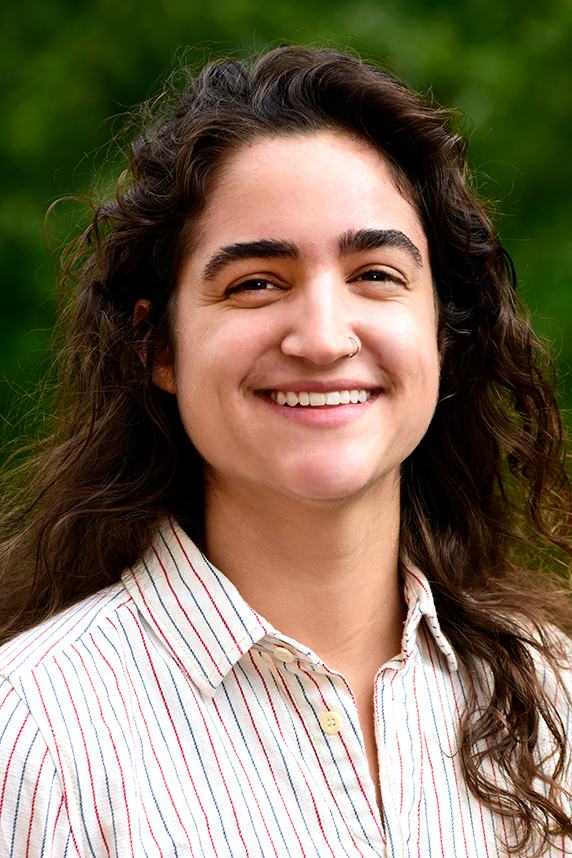 “I have fallen in love with asking really fundamental questions about what’s going on at the cellular level,” Placentra said. “Having the context of research for human health and disease is really important. I may be working in a model system, but I want whatever I do to have implications for enhancing human health and outcomes.” (Photo courtesy of Tori Placentra)
“I have fallen in love with asking really fundamental questions about what’s going on at the cellular level,” Placentra said. “Having the context of research for human health and disease is really important. I may be working in a model system, but I want whatever I do to have implications for enhancing human health and outcomes.” (Photo courtesy of Tori Placentra)“I really liked chemistry and had natural proclivities for it,” she said. “But I’ve also always really loved writing. I love to read. As much as I liked working in the lab, I didn’t always enjoy science classes. But I always enjoyed English classes, and I think I just couldn’t let them go.”
Science and storytelling
Fortunately for Placentra, her time at NIEHS showed her chemistry and English are not mutually exclusive.
“Science is so full of storytelling — being able to communicate to a wide variety of audiences about what you do and why you do it,” she said.
And although Placentra considered attending medical school for a time, in the fall she will begin her doctoral studies in genetics and molecular biology at Emory University in Atlanta.
“I’ve been really touched by the NIEHS community,” she said. “I’ve felt incredibly supported by the people in my lab and branch. I had this narrative in my head that to work in science, you were more of an individual rather than a team. I didn’t really understand that you could have a really vibrant, supportive community and also be involved in cutting-edge research.”
Stress and metabolic landscapes
Mutagenesis is the generation of mutations within a cell, and mutations in DNA can lead to human disease. Mutations can be caused by oxidative stress, which occurs when there is an imbalance between free radicals and antioxidants in the body. Free radicals are oxygen-containing molecules that have an uneven number of electrons, and therefore cause chemical reactions, which are known as oxidation.
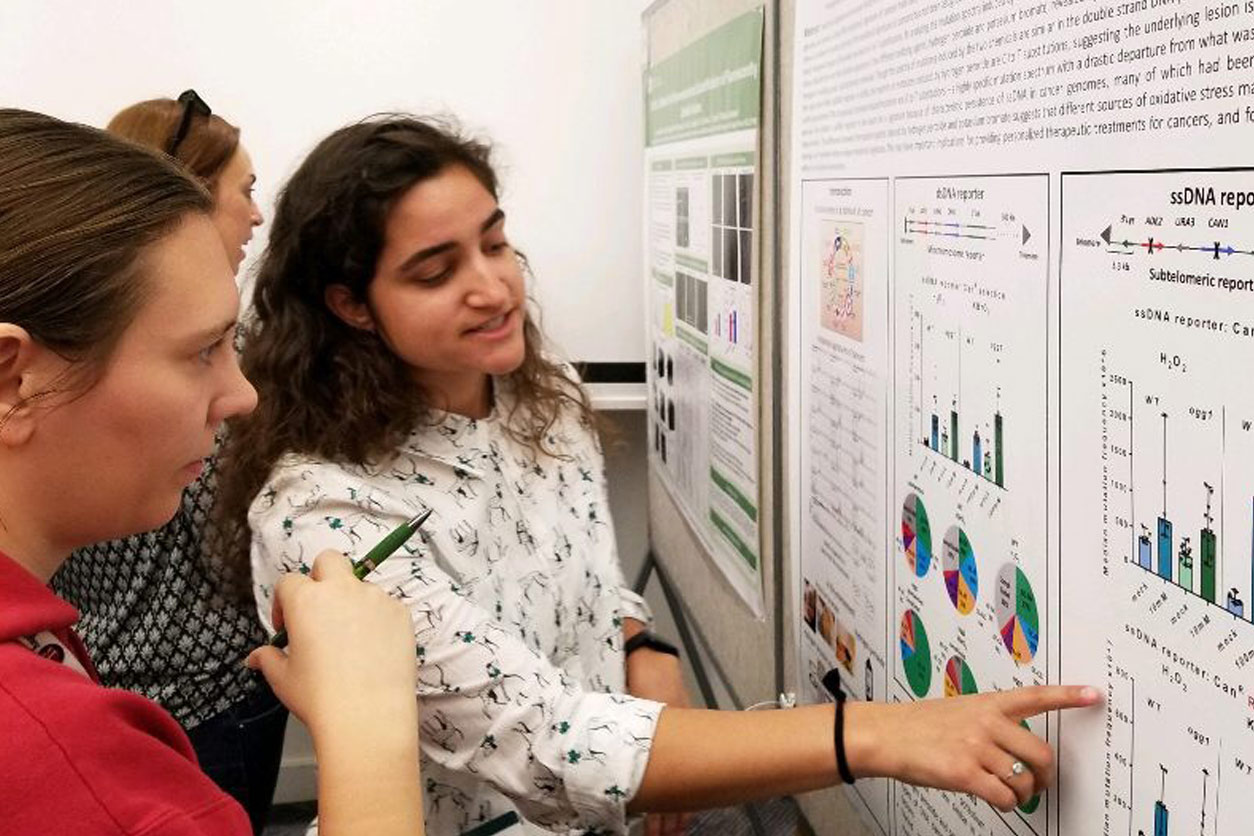 Placentra, right, presented her research on oxidative stress at the National Institutes of Health Postbac Poster Day in 2019. (Photo courtesy of Tori Placentra)
Placentra, right, presented her research on oxidative stress at the National Institutes of Health Postbac Poster Day in 2019. (Photo courtesy of Tori Placentra)“Redox stress is linked to human diseases like cancer and neurodegenerative ones such as ALS [amyotrophic lateral sclerosis] and Parkinson’s disease,” Placentra said. “The mechanisms of redox stress at the cellular level are important in understanding how it contributes to the progression of these diseases.”
Under Doetsch and Natasha Degtyareva, Ph.D., the lab’s staff scientist, Placentra studied the effects of oxidative stress in a yeast model system. Humans and yeast share many genes for essential cellular processes such as DNA repair.
For some time, the dogma in the field of oxidative stress was that no matter the type or the source of the stress, the overall cellular effect will be the same.
“It’s been assumed that different types of oxidative stress are all oranges to oranges,” Placentra said. “However, we started to discover that the effects of different types of redox stress can’t really be generalized. Each type is really its own unique fruit, with its own effects on the metabolic landscape of a cell.”
Mentorship proves essential
During her time at NIEHS, Placentra said, she expanded her skills as a scientist and gained confidence in herself.
“When I think back to my first few months here, I was nervous all the time,” she said. “My hands would shake when I was setting up a PCR [polymerase chain reaction] test,” she noted.
“But now, I’m so much less concerned with having the right answers as I am in asking the right questions,” Placentra said. “In the lab and in life, I have to really credit Paul and Natasha. They have been fantastic mentors.”
(Kelley Christensen is a contract writer and editor for the NIEHS Office of Communications and Public Liaison.)






